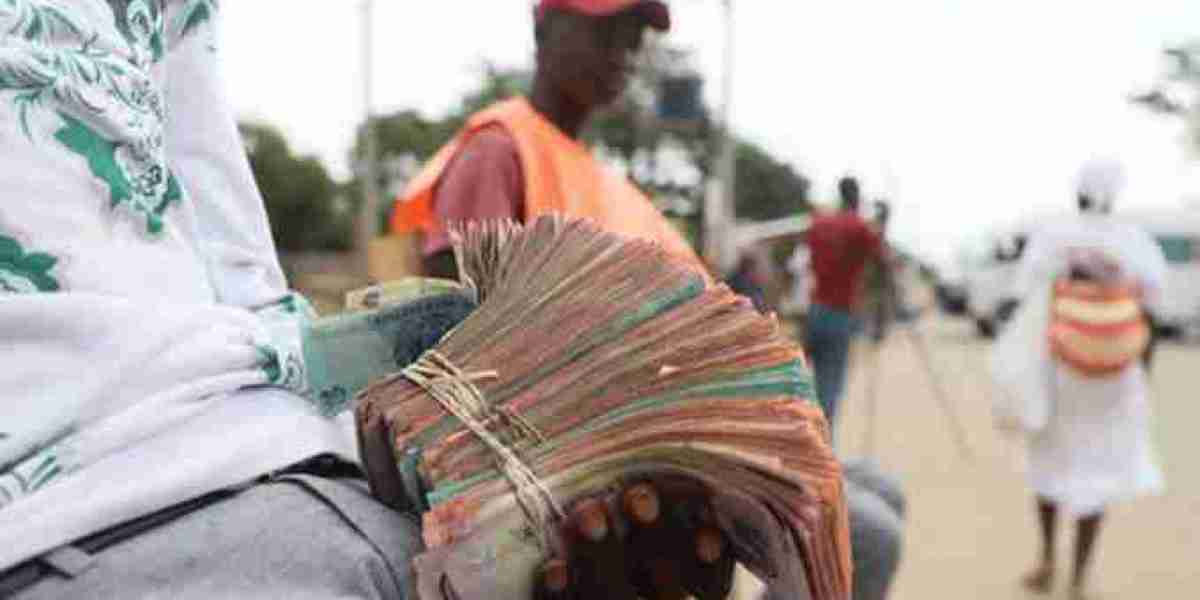Zimbabwe, buffeted by economic turmoil for over two decades now, has the highest inflation and one of the lowest valued currency units in the world.
Well-informed sources told The NewsHawks that outgoing Reserve Bank of Zimbabwe (RBZ) governor John Mangudya — officially replaced by his successor John Mushayavanhu yesterday — will launch the new currency after Easter holidays at the end of the week – almost certainly on Friday.
Mangudya will launch the currency with Mushayavanhu playing a prominent role in the process as the incoming governor tasked to defend that new unit, while fighting inflation.
The RBZ, banker and advisor to government, is responsible for formulation and implementation of monetary policy to ensure low and stable inflation levels, while protecting the value of the currency.
A source said: “The new currency will be launched at the end of the week after the Easter holidays — on Friday. It was supposed to have been launched much earlier in the year when the monetary policy statement was due in January or February, but it was delayed. Then 28 March was set as the new date, but there were still certain things that were not yet in place. So next week is the new date. Its value will be determined by the value of the ZiG, an RBZ gold-backed token.
“The official appointment and the role of Mushayavanhu was also an issue. Prior to that there were issues of gold and United States dollar reserves accumulation which were supposed to be in place before its announcement. One of the functions of the RBZ is management of the country’s gold and foreign exchange assets. This was a key process is coming up with the structured currency.”
Zimbabwe is battling the double whammy of currency volatility and inflation. Currency volatility occurs when there are rapid changes to the exchange rate of a currency in a short period of time.
Political and economic conditions have a considerable bearing on the exchange rate, thus its fluctuations. Inflation, both cost-pull and demand-pull, and foreign currency market operations also have an impact on the exchange rate.
RBZ lifts Access Forex suspension
This has been the case with the increasingly worthless Zimbabwean dollar now trading between US$1:ZW$25000 and US$1:ZW$30000. Sources said government has for a while been building some reserves to provide an anchor and to defend the currency which will inevitably plunge to a new death spiral unless there is a reserves war chest to support it.
Another source said: “Authorities have been buying gold since 2022 and they have also been building some US dollar reserves through the export retention scheme. So they are ready for the new currency launch, but the real question is how long will the honeymoon last. Will it hold without government resolving the broader political and economic crisis? When the Zimbabwean dollar was brought back in 2019 after a decade of decimation and demonetisation, it did not last long in a firm footing because it was not well-grounded.
No sooner had the Zimdollar been brought back as legal tender in 2019 than it started losing value even though authorities had insisted the exchange rate would hover around US$1:ZW$1 for a long time.”
Around that time, President Emmerson Mnangagwa even superficially claimed the bond note, which represented the Zimdollar in the market since 2016, was the strongest currency in the region.
However, it took only five years to see that the Zimdollar was a liability as a currency. At the moment, the Zimdollar is on yet another calamitous plunge.
Contacted for comment, Mangudya said the delay in delivering the monetary policy statement was necessitated by the need to finalise arrangements to ensure that the structured currency is well-supported to sustain exchange rate and price stability.
Exchange rate volatility has of late been the biggest driver of sharp price increases and inflation which is now officially at 55.3% for March. Annual inflation quickened to 55.3% in March from 47.6% in February, the Zimbabwe National Statistics Agency said on Wednesday. However, independent
American economist Professor Steve Hanke says Zimbabwe has the highest inflation in the world at 1 521%.
Mangudya said: “The idea behind the structured currency is to ensure exchange rate and price stability as the President has already explained. The Minister of Finance has also partly explained that the new currency will allow establishment of a quasi-Currency Board to help ensuring stability. The new currency will be backed by precious metals such gold and foreign currency.”
The International Monetary Fund says a currency board combines three elements: an exchange rate that is fixed to an “anchor currency,” automatic convertibility (that is, the right to exchange domestic currency at this fixed rate whenever desired), and a long-term commitment to the system, which is often set out directly in the central bank law.
The main reason for countries to contemplate a currency board is to pursue a visible anti-inflationary policy. Zimbabwe will not have a full currency board, but a framework of that quasi-structure.
A currency board system can be credible only if the central bank holds sufficient official foreign exchange reserves to at least cover the entire narrow money supply.
In this way, financial markets and the public at large can be assured that every domestic currency bill is backed by an equivalent amount of foreign currency in the official coffers.
A Treasury source said mobilisation of gold to support the new currency began in October 2022 when government came up with a policy of 50% royalties on precious metals to be paid in kind to the RBZ.
That became the basis of building reserves to anchor the structured currency, which will be similar to the gold-backed digital tokens named ZiG.
“The objective is to restore value, trust and confidence in the currency. Some of the main characteristics of money include measure and store of value, as well as acceptability. The structured currency has to have those basic characteristics.
Apart from gold, foreign currency has been mobilised to back the currency through the 25% forex liquidation policy on export proceeds,” the source said.
Zimbabwe’s economy which plateaued and stabilised in crisis in recent years due to extended periods of mismanagement, incompetence, policy inconsistencies, leadership failures, as well as poor governance and corruption, has over the past years experienced cycles of currency volatility which have prompted authorities to go back to the drawing board to structure a new currency.


